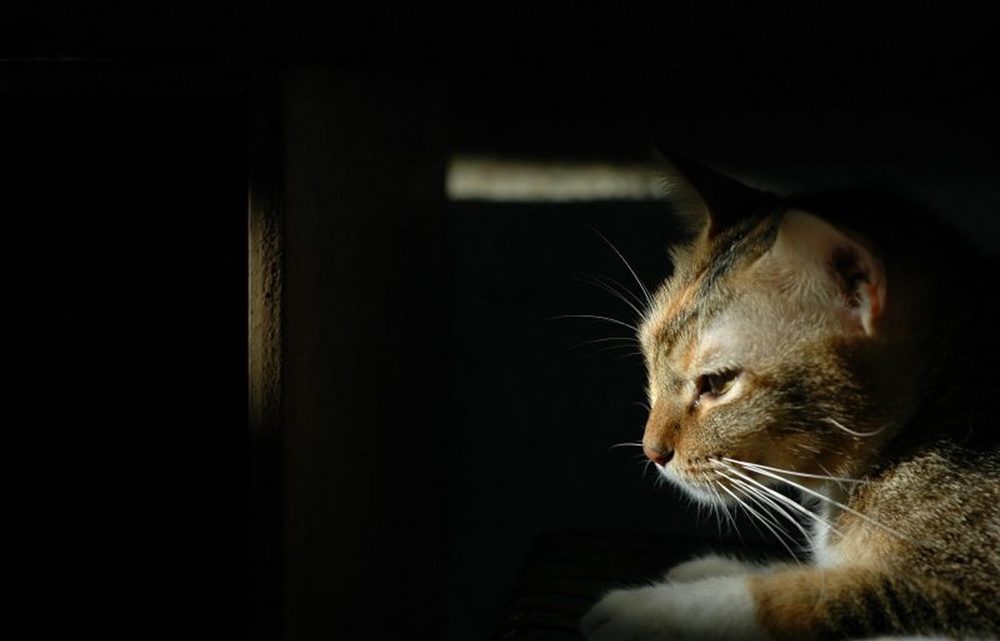Feline urinary tract disease may not always be just a physical condition. Recent research has revealed that stress also plays a big role in the development of what has been termed Pandora Syndrome.
Urinary tract disease is common in cats, and can be frustrating to diagnose and treat. It’s often impossible to identify an exact cause, and affected cats frequently have multiple health problems. But recent research has revealed that stress may be a contributing factor to feline urinary problems, in what been termed Pandora Syndrome.
We’re learning more about feline urinary tract disease
Our understanding of feline urinary tract disease has evolved over the last four decades. In the past, all urinary tract issues used to be grouped together under the heading FLUTD (Feline Lower Urinary Tract Disease), or FIC (Feline Idiopathic Cystitis). In the 1990s, veterinarians began to make a connection between feline urinary tract problems and interstitial cystitis in women, a chronic condition in which women experience bladder pain and an increased urge to urinate.
Then, in 2011, a study conducted at the Ohio State University on 32 cats over a three-year period found that stress has a significant impact on lower urinary tract health. Dr. Tony Buffington, study leader and emeritus professor of veterinary clinical sciences at the university’s College of Veterinary Medicine, coined the term Pandora Syndrome for this phenomenon.
“A name like ‘Pandora’ Syndrome seems appropriate for at least two reasons,” wrote Dr. Buffington in his paper “Idiopathic Cystitis in Domestic Cats — Beyond the Lower Urinary Tract”, published in the Journal of Feline Medicine. “First, it does not identify any specific cause or organ, and second, it seems to capture the dismay and dispute associated with the identification of so many problems (‘evils’) outside the organ of interest of any particular sub-specialty.”
The stress connection
Most cats who present with Pandora Syndrome have concurrent problems. “They have variable combinations of affected organ systems — skin, gut, lung, behavioral, endocrine, urinary, etc,” says Dr. Buffington. “They may be unusually susceptible due to adverse early life experiences that ‘sensitize’ their stress response system to environmental events.”
Symptoms may come and go and are often triggered by a stressful event in the cat’s life, such as the addition of a new feline to the family, home remodeling, or a move.
Treatment and prevention
The goal of treatment is to reduce stress and provide pain relief as needed. In all cases, environmental modification will be an important part of the solution. Litter boxes need to be kept scrupulously clean. In multi-cat households, territorial aggression needs to be prevented or reduced by providing plenty of vertical space in the form of cat trees and shelves, and hiding places such as cat cubes, tunnels and covered beds. Cat parents also need to be conscious about managing their own stress levels, since cats tend to pick up on human stress.
“We have found that MEMO — Multimodal Environmental Modification — results in a reliable reduction of all clinical signs, and improvement in the cat’s health and welfare,” says Dr. Buffington. “I see MEMO as essential preventive care for healthy cats, and as essential adjunctive care for cats with chronic health problems.” By providing an enriched environment, interactive play sessions, and simply spending more time with affected cats, the frequency of the stress response activation will be reduced, giving the affected organs a chance to heal. “When this happens, the cats recover” says Dr. Buffington. “Whether their stress response systems return to ‘normal’ remains to be seen.”
Keeping the cat’s routine consistent is also important. The Ohio State University study found that cats reacted with flare-ups to even minor changes, such as a switch in caretakers. Cat parents who are planning major changes in the household, such as remodeling, moving, or the addition of a new human or feline family member, should be aware that the added stress will often cause a recurrence of Pandora Syndrome.
“Based on the latest neuro research, enrichment is a multi-faceted effort to change the life experience for these cats,” adds feline veterinarian Dr. Elizabeth Colleran. “They are more sensitive to stressors that might leave other cats unaffected. Enrichment is not just adding in good interaction — it is also recognizing and removing the experiences causing a negative emotional state.”
Diagnosing Pandora Syndrome
Since there is no one single cause of Pandora Syndrome, diagnosis can be frustrating and may require some detective work on the part of your vet.
“Unfortunately, we really don’t have a ‘specialty’ to deal with anxiopathy,” says Dr. Buffington. “So patients tend to go to organ system specialists who focus too much (in my view) on the organ of their specialty, and not enough on the rest of the animal.”
At a minimum, diagnosis will start with a thorough physical exam, urinalysis and bloodwork, and should also include a behavioral assessment.
If your cat seems prone to urinary tract problems, be sure to take him to the vet, but also consider the possibility that stress may be a contributing factor, and that your kitty may in fact be prone to Pandora Syndrome.







No Comment